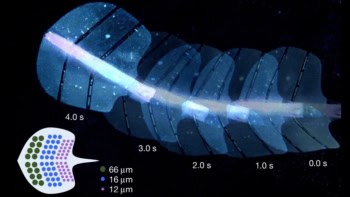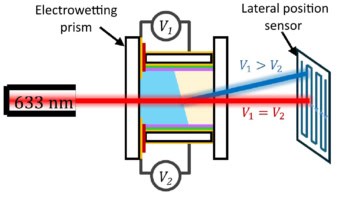Astronauts often experience random flashes of light when they are in space. These flashes are thought to be caused by the interaction of energetic cosmic-ray particles with the retina but the exact mechanism of this phenomenon has long been a mystery. Now, however, scientists have carried out experiments on the Mir space station which suggest that two different types of cosmic rays cause the flashes. Apollo 11 astronauts were the first to report that they had experienced flashes of light in space, mostly when their eyes were closed, and subsequent teams of astronauts have also observed the phenomenon (M Casolino et al. 2003 Nature 422 680).

The Earth is surrounded by a spherical magnetic field known as the magnetosphere, which protects it from cosmic radiation. However, at a certain location over the South Atlantic Ocean – off the coast of Brazil – this shielding effect is weaker. Spacecraft passing through this so-called “South Atlantic Anomaly” (SAA) are exposed to higher fluxes of cosmic rays – in particular protons.
The Mir astronauts recorded the number of flashes they observed while wearing helmets containing particle detectors as Mir’s orbit passed through the SAA. Marco Casolino from the University of Tor Vergata in Rome and an international team of colleagues plotted the light-flash rate against the number of particles – mostly protons. They also plotted the flash rate against the number of relativistic nuclei, to completely remove the proton component, inside and outside the SAA.
The researchers found that the light-flash rate was not related to the number of protons detected, which means that that the light flashes cannot be caused by protons alone. Moreover, light flashes inside the SAA are more frequent than outside it: 0.15 flashes per minute were counted inside compared to only 0.06 per minute outside. This implies that there must be another factor contributing to flashes inside the anomaly.
The team proposes two complementary mechanisms to explain these findings. The first is the direct interaction of heavy nuclei with the retina that causes ionization or excitation and the second, proton-induced nuclear interactions in the eye that produce knock-on particles.



